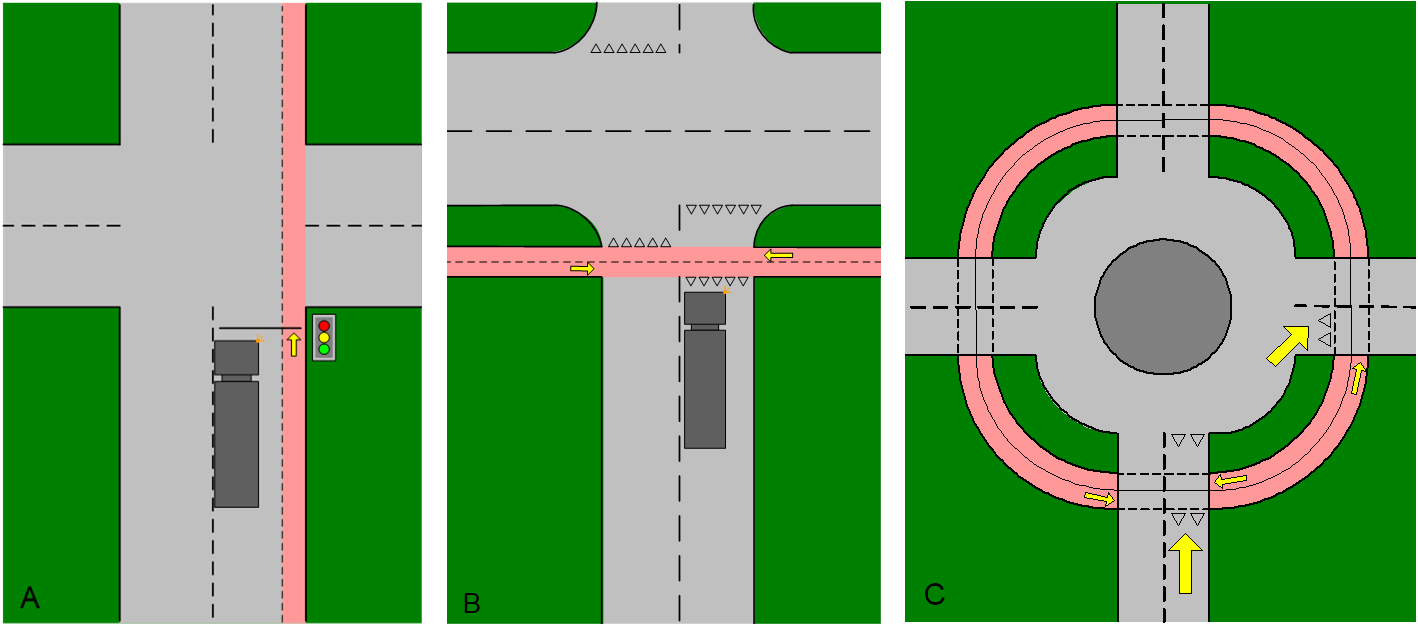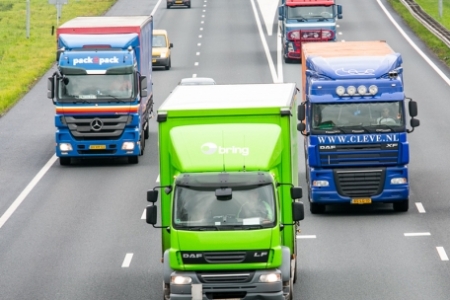From 2008 to 2016[i], an annual average of eight to nine road deaths were attributable to blind spot crashes with a truck and two road deaths to blind spot crashes with a delivery van. Possible measures to prevent blind spot crashes are separating vulnerable road users from trucks, developing detection systems, and information and education campaigns for truck drivers and vulnerable road users.
The blind spot problem is usually taken to imply that it is hard to see vulnerable road users in front of or to the right side of the truck cabin. Correctly adjusted mirrors (including blind spot mirrors in front of and to the right side of the cabin) should allow the truck driver to directly or indirectly see the entire space around the cabin, with the exception of the area behind the A pillars of the truck. However, seeing that drivers have to look at several mirrors, windscreens and possible camera systems to obtain the most complete picture possible they will have trouble seeing everything at once. From 2008 to 2016, if we observe the selection of blind spot crashes by the Ministry of Infrastructure and Water Management, an annual average of 8-9 road deaths were attributable to blind spot crashes with a truck (of which 6-7 were cyclists) and 2 road deaths to blind spot crashes with a delivery van. In the Netherlands the problem is bigger for cyclists than for pedestrians. Therefore, Dutch studies mainly focuses on crashes between trucks and cyclists. The report by Schoon, Doumen and de Bruin [32] (see Figure 6) describes three common scenarios.
 Figure 6. Three common situations in which conflicts arise between trucks (presented as large yellow arrows) and cyclists (small yellow arrows). A. At an intersection (with traffic lights), the truck starts from a stationary position and turns right; the cyclist rides straight ahead. B. The truck approaches a priority road with a separate bicycle path (two-way traffic). C. Entering or driving on a roundabout where cyclists have priority. When a truck enters the roundabout, the situation corresponds to situation B, when leaving the roundabout with situation A (source: [32])
Figure 6. Three common situations in which conflicts arise between trucks (presented as large yellow arrows) and cyclists (small yellow arrows). A. At an intersection (with traffic lights), the truck starts from a stationary position and turns right; the cyclist rides straight ahead. B. The truck approaches a priority road with a separate bicycle path (two-way traffic). C. Entering or driving on a roundabout where cyclists have priority. When a truck enters the roundabout, the situation corresponds to situation B, when leaving the roundabout with situation A (source: [32])
In all cases, the cyclist driving straight ahead takes priority (when the traffic light is green) over the truck. However, the cyclist is regularly overlooked by the truck driver. This may be due to field of vision problems (no or incorrectly adjusted mirrors or objects on the driver’s dashboard) or a too heavy task load (turning right asks too much of the driver’s mental capacity because it is a complex situation). At the same time, the cyclist does not realise that the truck driver does not see him or that the truck driver intends to turn right.
From 2010 to 2016, the number of blind spot crashes among cyclists has remained below 10. In previous years, the annual number of fatal blind spot crashes among cyclists was 10 to 20, with the exception of 2002 and 2003 when the blind spot mirror had just been introduced, accompanied by a lot of publicity about the blind spot of trucks. The decrease of the number of fatal blind spot crashes may be a consequence of EU legislation concerning a mandatory field of vision around trucks and of information and education campaigns for cyclists. In addition, ‘focus on the blind spot’ has been included in the list of elements to be assessed during truck driver training. However, an explicit procedure about how and when the truck driver has to look into the mirrors is does not exist. Blind spot crashes can be prevented if trucks and vulnerable road users do not encounter each other on the road, for example by means of a separate infrastructure for heavy goods vehicles (separation in space) or by setting delivery times (separation in time). Other solutions reducing the crash risk are the use of a cycle box at traffic lights (where cyclists wait in front of a truck instead of to the right of the cabin), developing blind spot detection systems that are reliable in timely support and/or intervention, continuing information and education campaigns for vulnerable road users, and more explicit focus on the blind spot during truck driver training [33].
[i]. Since 2017 it has no longer been possible to determine the number of road deaths attributable to blind spot crashes, because specific road user manoeuvres are no longer registered. Since 2009, there have not been (reliable) figures of serious road injuries attributable to blind spot crashes.
